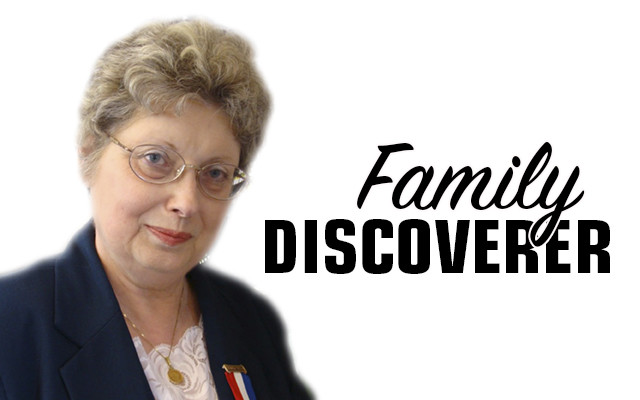
All in a name
In the last column I discussed tips for locating the surnames of female ancestors. This can often be a difficult and long task.
My focus in that column was on the western style of wives taking their husband’s surnames. Other cultures handle things differently. For example, if your female ancestor was Spanish, she kept her maiden name with her married name after it, as in Theresa Salazar Pedro — Salazar the maiden name, Pedro her husband’s surname.
In the Scandinavian countries, a different custom prevailed. The father’s given name became the next surname. Anders Johnson’s son will be Erick Anderson, Erick’s daughter will be Ingrid Ericksdottir. In other countries a woman’s married status was indicated by the addition of certain letters to her maiden name. Be sure to check on customs in the area you’re researching.
If your research takes you into the Middle Ages, know that names usually meant occupation. We have these names today. Farmer, Baker, Fletcher, Porter, Carter, Woodman, Carpenter, Brewer and Smith are all examples of occupational names. Joseph Woodman’s son might have been John Brewer and John Brewer’s son, William Farmer. Earlier still, people didn’t have surnames at all. Other surnames indicate where the person lived. Thurston means Thor’s Town, for example.
In the western European tradition it may help if you look at a couple’s children’s names. Usually, the first son was named for his paternal grandfather; the first daughter for her mother’s mother. If the couple had a large family there likely will be a son named for the wife’s father. If you see a Seth Johnson Smith it is possible Seth was named for his maternal grandfather, Seth Johnson. Keep an eye out for daughters with surnames as their middle names. If you find Margaret Moore Smith it’s likely she was named for a sister of her mother or father. Researching them may open the door to locating the maiden name of the mother.
It also may help to keep in mind that given names today are not the same as they were in other centuries. Look among the children for a surname used as a given name. Take Knowles Adams, for example, born in the early 1700s. Knowles is hardly a common given name. And there was Tyler Porter, born in 1758. You might not recognize this clue today, but Tyler wasn’t a given name in the 1700s. With research you’ll quickly discover Tyler was his grandmother’s maiden name.
I want to stress it takes patience to locate a woman’s unknown surname. I recently found a marriage record that identifies my third great-grandmother’s maiden name. It was her first marriage and when she married my third great-grandfather as a widow she is listed in the record by her first husband’s surname. Finding this only took 30-plus years.
Regardless of how long, don’t give up. The women in your tree deserve to have their names known, so good luck in the pursuit of the seemingly unknowable.
Nancy Battick is a Dover-Foxcroft native who has researched genealogy for over 30 years. She is past president of the Maine Genealogical Society, author of several genealogical articles and co-transcribed the Vital Records of Dover-Foxcroft. Nancy holds an MA in History from UMaine and lives in Dover-Foxcroft with her husband, Jack, another avid genealogist. You can contact Nancy at nbattick@roadrunner.com.